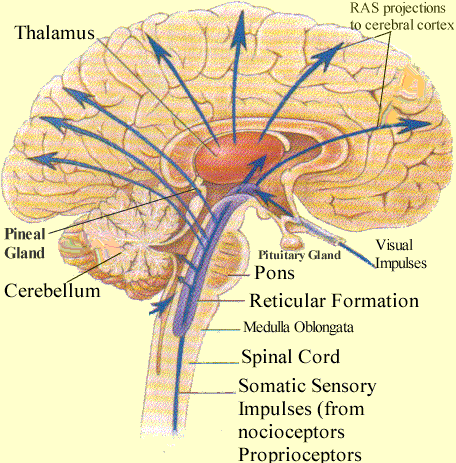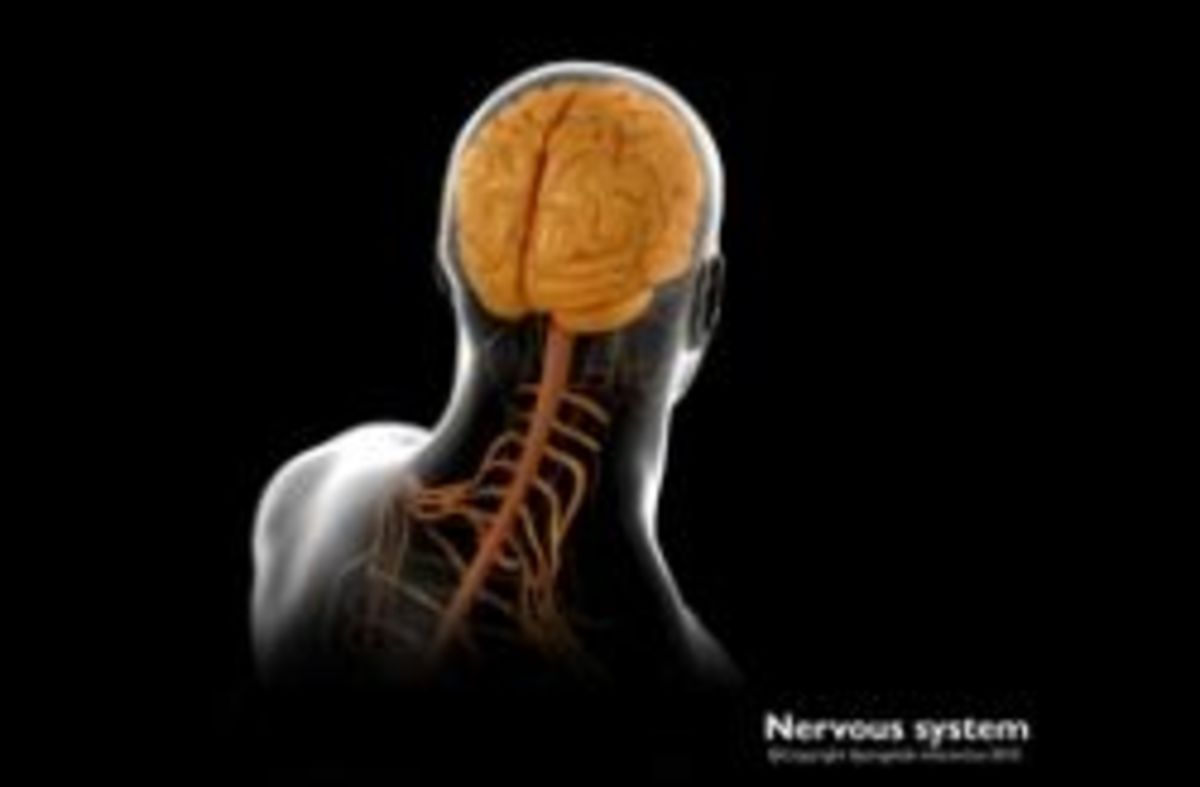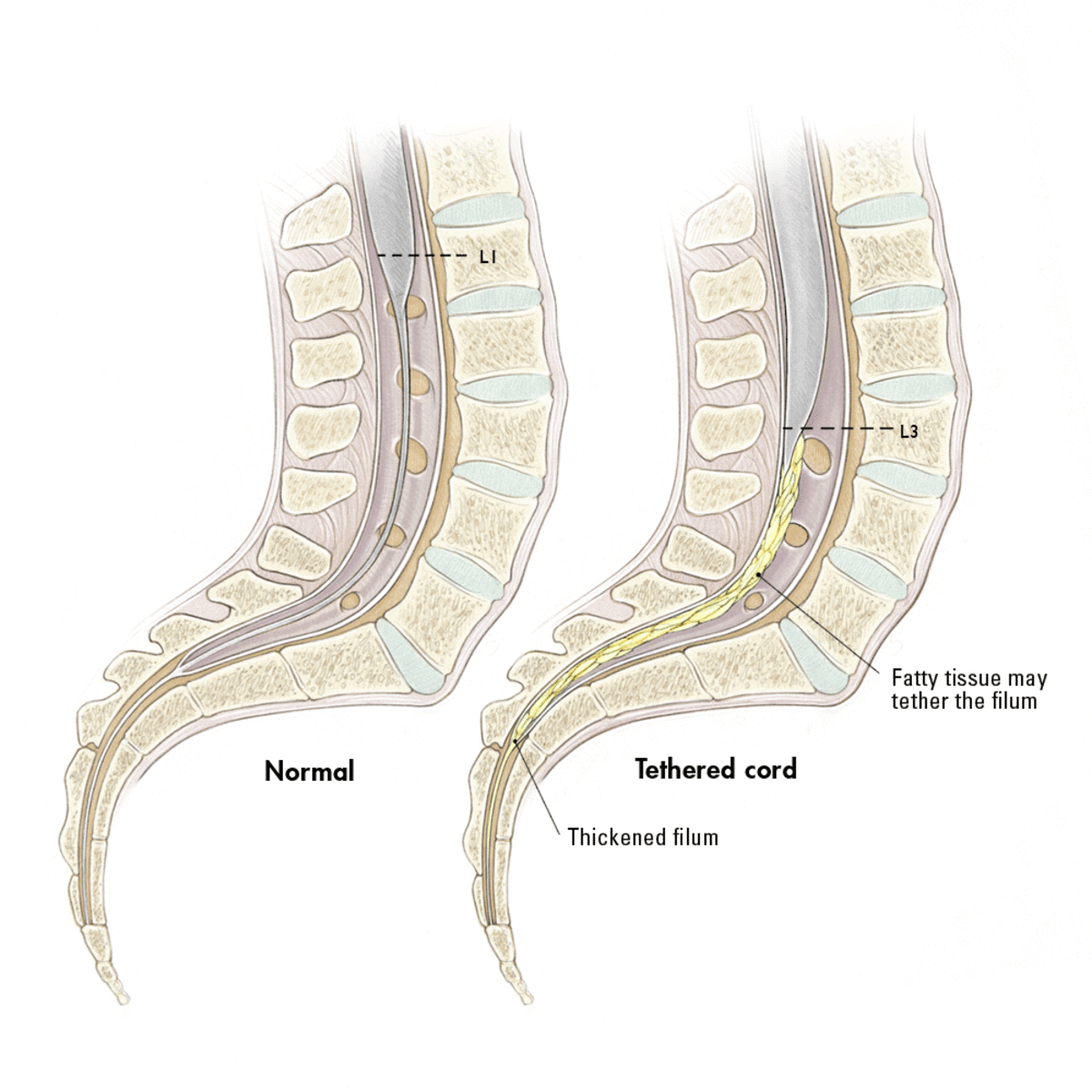What is Reticular system of the brain?
Introduction
Reticular system of the brain is a loosely arranged net of neural cells that are extended up through the spinal cord to the cerebrum. It is strategically placed in various important nerve tracts and nuclei. It receives inputs from almost all the sensory systems and it influences cells at all levels of central nervous system.

Neuroanatomy of reticular system
General anatomy
This diffuse network can be divided into three columns. They are called median column, medial column and lateral column. It contains highly organized transmitter specific cells such as dopaminergic cells. Reticular formation connects with the spinal cord gray matter inferiorly and superiorly impulses are relayed to the cerebral cortex. In addition substantial number of projection fibers goes to cerebellum.
What are the afferent (incoming) connections?
From spinal cord there are Spinoreticular tracts, spinothalamic tracts and medial leminiscus. From cranial nerve nuclei, there are tracts including vestibular, acoustic and visual pathways. From cerebellum there is a cerebellar reticular pathway. In addition there are many incoming connections from subthalamic, thalamic and hypothalamic nuclei. Corpus striatum and the limbic system also connect to the reticular system. Primary motor cortex and sensory cortex are also connected to the reticular system.
What are the Efferent (outgoing) connections?
Many neurons project down into the anterior horn cells of the spinal cord and cranial the nerve nuclei. Some pathways descend into the sympathetic outflow and parasympathetic sacral outflow. In addition following pathways are known to exist, corpus striatum, cerebellum, red nucleus, substantia nigra, the tectum, nuclei of thalamus, sub thalamus and hypothalamus. Besically almost all nervous system components connect with reticular system.
What are the functions of reticular system?
1. Control of the skeletal muscles: - Through reticulospinal and reticulobulbar tracts it influences the alpha and gamma motor neurons. It can modulate muscle tone and reflex activity. In addition it can bring about reciprocal inhibition.
a. In addition Reticular system is important in controlling the muscles of facial expressions that are associated with emotions. Controlling pathway of this function is different from the corticobulbar tracts. So even a person who suffered a stroke in corticobulbar pathway and having lower facial paralysis, still can smile.
2. Control of somatic and visceral sensations: - Reticular formation can influence every sensation that is carried into the higher centers of the brain. It can modulate and have a role to play in gating theory of pain.
3. Control of the autonomic nervous system: - Reticular system is involved in controlling the autonomic nervous system with other higher centers such as hypothalamus.
4. Control of the endocrine system: - With the help of hypothalamus reticular system can influence the endocrine system.
5. Influencing the biological clock:- It influence the biological clock with hypothalamus.
6. Arousal and level of consciousness: - This is controlled by way of modulating the sensory inputs to the higher centres.
It is important to note that specific damage to the reticular formation results in unconsciousness and coma.
Sources
Snell’s Neuroanatomy







